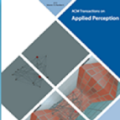In the prompt-specific holistic score prediction task for Automatic Essay Scoring, the general approaches include pre-trained neural model, coherence model, and hybrid model that incorporate syntactic features with neural model. In this paper, we propose a novel approach to extract and represent essay coherence features with prompt-learning NSP that shows to match the state-of-the-art AES coherence model, and achieves the best performance for long essays. We apply syntactic feature dense embedding to augment BERT-based model and achieve the best performance for hybrid methodology for AES. In addition, we explore various ideas to combine coherence, syntactic information and semantic embeddings, which no previous study has done before. Our combined model also performs better than the SOTA available for combined model, even though it does not outperform our syntactic enhanced neural model. We further offer analyses that can be useful for future study.
翻译:在自动日志扫描的即时、整体分数预测任务中,一般方法包括:预先培训的神经模型、一致性模型和混合模型,其中包括神经模型的综合特征。在本文中,我们提出一种新的方法来提取和代表作文一致性特征,与迅速学习的NSP相匹配,显示与先进的AES一致性模型相匹配,并取得长篇论文的最佳性能。我们应用综合特征密集嵌入增强基于BERT的模型,为AES的混合方法取得最佳性能。此外,我们探索各种想法,将一致性、合成信息和语义嵌入结合起来,以前没有做过任何研究。我们的综合模型也比综合模型现有的SOTA运行得更好,尽管它并不比我们的合成增强神经模型要强。我们进一步提供了可用于未来研究的分析。



